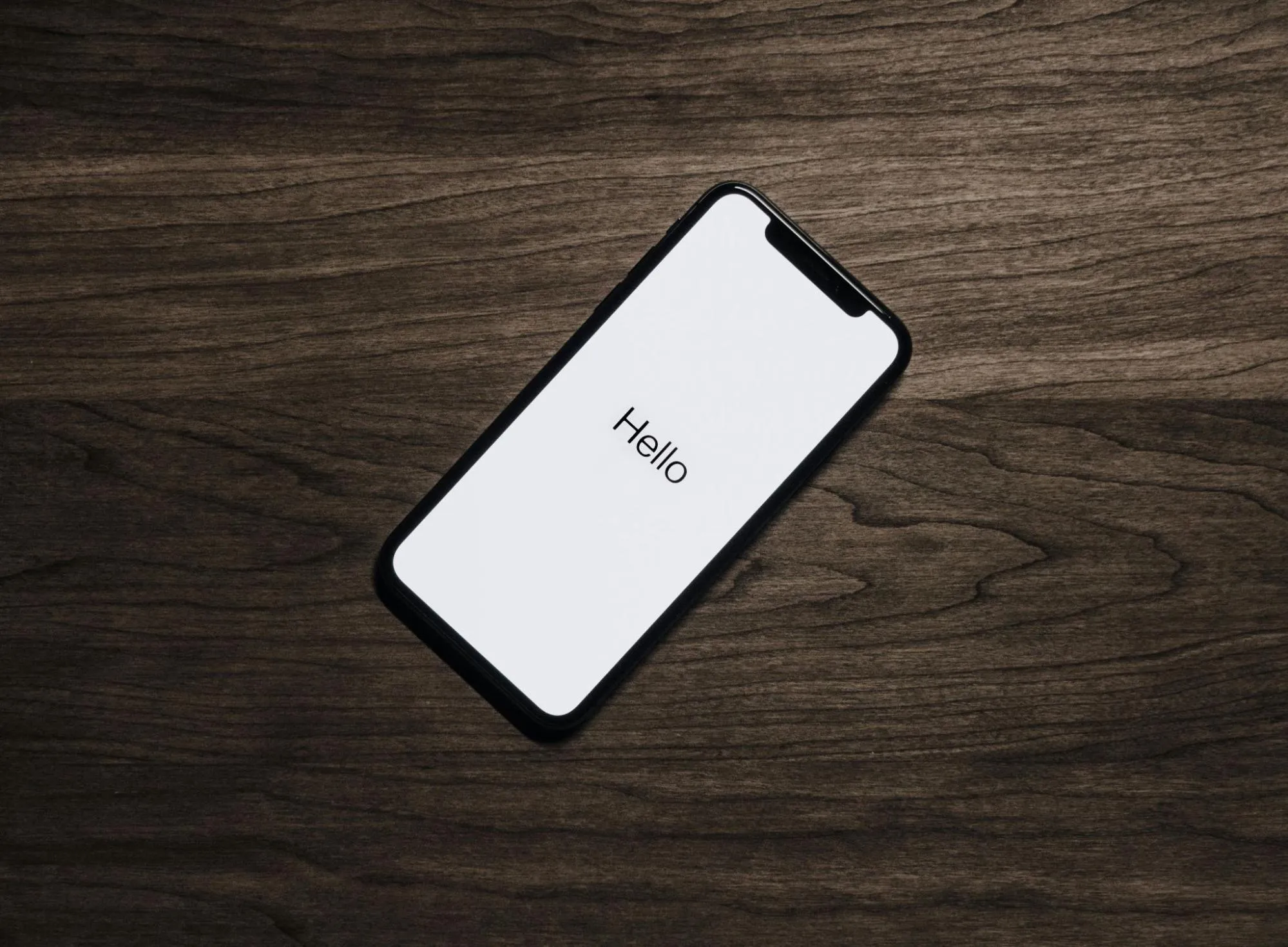In today’s fast-paced business world, effective communication and collaboration are crucial for success. This article explores innovative ways to leverage technology for improved teamwork and productivity. Drawing on insights from industry experts, we present practical strategies to enhance your organization’s communication and collaboration practices.
- Build a Digital Ecosystem for Strong Culture
- Implement Asynchronous Video Updates
- Integrate Slack with Automated Workflows
- Use AI to Streamline Recruitment Process
- Leverage Existing Tools More Intentionally
- Create Shared Visibility with Notion Boards
- Celebrate Achievements Through Slack Integration
- Combine Drone Imaging with Project Management
- Develop Asynchronous Mentor-Student Dashboard
- Establish Weekly Slack Check-In System
- Utilize WhatsApp for Global Team Engagement
- Switch to Loom for Asynchronous Updates
- Centralize Communication to Reduce Email Overload
- Foster Engagement with Real-Time Chat Platforms
Build a Digital Ecosystem for Strong Culture
For me, leveraging technology to enhance communication, collaboration, and employee engagement is about fostering an environment where everyone feels heard, valued, and empowered to contribute. It’s about more than just tools; it’s about building a digital ecosystem that supports a strong company culture.
For communication, we rely on a multi-channel approach. While email handles formal announcements, Slack is our daily pulse. Its channel-based structure for projects, teams, and even informal topics (#random, #celebrations) has dramatically reduced email overload and encourages real-time, informal exchanges. This immediate flow of information makes everyone feel more connected and informed.
When it comes to collaboration, cloud-based platforms like Google Workspace (Docs, Sheets, Slides) are indispensable for co-editing documents in real-time, eliminating version control headaches. For visual collaboration and brainstorming, Miro has been a revelation, allowing remote teams to simulate an in-person whiteboard experience.
However, where technology truly excels for employee engagement is in facilitating recognition and fostering a sense of community.
A highly successful technology implementation for us has been the integrated use of Microsoft Teams with a “Kudos” bot and a dedicated “Recognition” channel. Beyond standard chat and video calls, we actively use Teams to celebrate successes.
We have a public “Recognition” channel in Teams. Any employee can, at any time, use a simple slash command (e.g., /kudos @colleagueName for going above and beyond on project X!) to send a public shout-out to a colleague. The “Kudos” bot then posts this message in the Recognition channel, making it visible to the entire company. We also encourage adding emojis or GIFs to make it more personal and fun.
 Maksym Zakharko
Maksym Zakharko
CMO, maksymzakharko.com
Implement Asynchronous Video Updates
One of the most successful ways we’ve used technology to enhance communication and employee engagement was through implementing a shared asynchronous video update system — essentially, a weekly ritual where team leads record short, focused videos instead of sending long emails or scheduling more Zoom calls. It sounds simple, but it’s had a massive impact.
This approach solved three major issues: message clarity, meeting fatigue, and cultural alignment. In a remote-first environment, written updates were getting skimmed, and real-time calls were draining productivity. So we introduced short video updates using a lightweight recording tool, where each lead could walk through their week, share wins, flag blockers, and call out teammates who excelled — all in five minutes or less.
The results? Communication felt more personal again. You could hear tone, see expressions, and connect with the human behind the update. It also encouraged more thoughtful communication — people became clearer and more intentional when they knew they were speaking to their team, not just writing into the void. Most importantly, it created space for recognition. People started looking forward to “shoutouts,” which gave everyone — from new hires to senior leaders — a sense of belonging.
This one shift elevated how we collaborate across departments and time zones. Engagement rose, clarity improved, and we reclaimed hours of time while reinforcing a culture of transparency and appreciation.
The key lesson: technology should feel like an extension of culture, not a replacement for it. When used intentionally, even simple tools can unlock deeper connection, better collaboration, and a more energized team.
 John Mac
John Mac
Serial Entrepreneur, UNIBATT
Integrate Slack with Automated Workflows
As someone who manages remote teams across five continents, I’ve learned that the right technology isn’t just a tool — it’s the backbone of modern workplace connectivity.
One of our most successful technology implementations was the integration of a customized Slack workspace with automated workflows. We created dedicated channels for different projects, automated daily stand-ups, and implemented a bot that randomly pairs team members for virtual coffee chats once a week.
The results were transformative. Our team engagement metrics increased by 40% within three months. The virtual coffee chats, in particular, helped bridge the cultural gaps between team members from different countries, leading to more organic collaboration and improved project outcomes.
Here are some key lessons from our implementation:
1. Start small and scale gradually. We began with just three automated workflows and expanded based on team feedback.
2. Focus on solving real problems. Our automated daily stand-ups eliminated the need for time-zone-dependent meetings, saving each team member about 3 hours per week.
3. Prioritize human connection. Technology should enhance, not replace, personal interaction. Our virtual coffee chats actually increased spontaneous collaboration between team members.
We’ve found that the key to successful technology implementation isn’t just choosing the right tools — it’s about creating a digital environment where employees feel connected, heard, and empowered.
I’d be happy to share more specific details about our implementation process or discuss other technology solutions we’ve found effective for remote team management.
 Maurizio Petrone
Maurizio Petrone
Founder & CEO, PressHERO
Use AI to Streamline Recruitment Process
One practical way we’ve strengthened communication and collaboration across our Talent Acquisition team is by integrating AI video interviewing tools directly into our ATS. This simple step has cut hours of repetitive screening — our recruiters now get AI-analyzed video responses and scoring upfront, so everyone stays aligned on who’s worth moving forward and where each candidate stands, without endless status updates.
Another game-changer has been AI note-taking during interviews. Instead of juggling half-baked notes, recruiters stay fully focused on the conversation and review a clean, organized summary afterward. It sounds minor, but over time it has made our debriefs clearer, handovers smoother, and allows us to spend more time assessing real fit — not hunting through scribbles.
 Ann Kuss
Ann Kuss
CEO, Outstaff Your Team
Leverage Existing Tools More Intentionally
We’ve had great results using asynchronous video updates to improve communication across the company. Instead of calling live meetings for every update, we record short, clear videos — things like project progress, hiring updates, or even quick team shoutouts.
It’s made things more efficient. People watch on their own time, which works well across time zones. It’s reduced meeting fatigue, and honestly, hearing someone speak feels more human than reading a block of text.
For collaboration, this approach keeps everyone aligned without needing constant check-ins. Our engineers stay in focus mode longer, and our HR team can keep everyone in the loop without overloading inboxes.
We didn’t introduce anything new; we just used existing tools more intentionally. And that’s what’s worked best for us: choosing technology that fits how people already work, not forcing something shiny that doesn’t stick.
 Vikrant Bhalodia
Vikrant Bhalodia
Head of Marketing & People Ops, WeblineIndia
Create Shared Visibility with Notion Boards
As someone who leads a lean, creative, mostly remote team across multiple brands, I rely on technology not just to streamline communication — but to keep everyone energized and aligned around a shared vision. One standout implementation for us has been integrating Notion as our central hub.
We use Notion for everything from campaign planning to editorial calendars to team check-ins. But the real shift came when we implemented a custom “Weekly Wins + Workflow” board — a shared space where each team member drops their weekly focus, micro-accomplishments, and roadblocks. It takes 10 minutes a week, but it has radically improved team clarity, accountability, and morale.
This small system created real engagement because it wasn’t about micromanaging — it was about creating lightweight visibility into the work that matters. Team members feel seen, celebrated, and clear about how their roles contribute to larger goals. For a brand-driven business like mine, where storytelling and consistency are everything, that kind of connectedness is crucial.
 Kristin Marquet
Kristin Marquet
Founder & Creative Director, Marquet Media
Celebrate Achievements Through Slack Integration
Talmatic utilizes technology to drive maximum participation and communication by focusing team collaboration on tools that include messaging, project management, and rewards.
One effective application of integrating Slack with our performance management system was automatically celebrating achievements and milestones in real time.
I must admit that it increased visibility of individual contributions and fostered a feeling of a high-performing, connected remote team culture.
 George Fironov
George Fironov
Co-Founder & CEO, Talmatic
Combine Drone Imaging with Project Management
Technology is not just a tool — it’s a core enabler of how we communicate, collaborate, and engage as a high-performing, mission-driven team. With operations expanding across multiple regions in Canada and the U.S., maintaining alignment across engineering, field teams, and client service professionals requires seamless coordination and shared purpose.
One successful technology implementation that has significantly enhanced our internal collaboration is our integration of drone imaging and GPS-mapped project data into a centralized project management platform. We combined this with real-time communication tools like Slack and Asana, tailored specifically for solar deployment workflows.
Here’s how it works: Once our drone and thermal imaging teams gather site data, it’s instantly uploaded and geo-tagged within the platform. Engineers, technicians, and project managers can all access the same visual information, annotate designs, flag permitting concerns, and communicate adjustments without delay — regardless of their physical location.
This integration has had a measurable impact. It reduced design revision cycles by 30%, improved interdepartmental transparency, and boosted morale because each team member can see how their input directly contributes to successful project outcomes. It also fosters a culture of inclusion, where feedback flows freely, and each role is recognized as critical to our shared sustainability goals.
By aligning advanced technologies with human-centered communication, we’re not just building better solar systems — we’re building a stronger, more connected team.
 Matthew Jaglowitz
Matthew Jaglowitz
CEO, Exactus Energy Inc.
Develop Asynchronous Mentor-Student Dashboard
When we scaled our mentorship programs internationally, timezone mismatches and uneven communication flow became a major barrier. We built a centralized, asynchronous mentor-student dashboard where updates, documents, and feedback are exchanged in real time, but without the pressure of scheduling. Each message is timestamped, context-aware, and archived.
It transformed our internal collaboration as well. Editors, strategists, and customer success teams now have full visibility into student progress and mentor alignment. The impact wasn’t just operational; it was cultural. It moved us from reactive to proactive support. Engagement soared, especially among our international staff who finally felt part of a seamless, shared process. It’s a quiet technology, but it’s been one of the loudest contributors to our success.
 Joel Butterly
Joel Butterly
CEO & Founder, InGenius Prep
Establish Weekly Slack Check-In System
We believe employee engagement starts with making people feel heard, and that can’t happen without the right tools in place. When we noticed that asynchronous updates were dragging meetings longer and making people feel left out, we rolled out a Slack-based check-in system.
It sounds simple, but just creating a weekly thread where everyone shares what they’re working on, any blockers, and a small win made a huge difference. It cut down our Monday meetings by 40%, boosted transparency across teams, and surprisingly, brought in more spontaneous collaboration.
The real win? We saw a 2x increase in peer-to-peer shoutouts, and even quiet team members started chiming in regularly. It turns out, when you give people a structure to speak up without putting them on the spot, they do, and that’s been a huge unlock for both communication and morale.
 Marko Rojnica
Marko Rojnica
Founder & CEO, Ventnor Web Agency
Utilize WhatsApp for Global Team Engagement
WhatsApp serves us as an essential, rapid communication and engagement tool for our global team, complementing our formal systems.
We use WhatsApp for instant announcements and urgent alerts, such as sudden client changes or system outages, ensuring immediate dissemination. It’s also vital for quick Q&A and clarifications on project specifics, allowing linguists to get immediate responses without email delays. Informally, we share brief, positive news or quick updates.
For ad-hoc team consultations, WhatsApp groups facilitate quick brainstorming and problem-solving, especially for small, focused project teams. We use it for sharing quick reference materials like images, audio clips, or links, ensuring immediate access. It’s also effective for coordinating simple shared tasks, such as scheduling client calls across different time zones.
Our “Vision Voices” social group is a key engagement tool. It’s an optional, informal space for celebrating personal milestones like birthdays and anniversaries, fostering a sense of community through well-wishes from colleagues worldwide. We also use it for celebrating company milestones, such as securing a new client, allowing everyone to share in the excitement instantly. Team members are encouraged to share personal moments, like photos or cultural insights, building stronger bonds. Occasionally, informal knowledge sharing occurs, with linguists sharing interesting linguistic facts or articles, sparking enriching discussions.
The “Vision Voices” social group has significantly boosted morale and engagement. It creates a sense of belonging for our remote linguists, combating isolation. For instance, when a team member in Dubai had a baby, the group instantly filled with congratulations and baby photos from colleagues globally. This demonstrated a strong, supportive human connection, reinforcing that we’re a family, not just a collection of remote workers. This fosters immense pride and strengthens team cohesion.
 Zahra Abidi
Zahra Abidi
Founder, Vision Translation
Switch to Loom for Asynchronous Updates
One of our most successful implementations was switching to asynchronous video updates using Loom. Instead of meetings, team leads send short videos with updates and blockers. It’s saved us over 10 hours per employee each week.
Unnecessary meetings cost companies billions in lost productivity. By replacing live check-ins with on-demand video, we saw faster responses, clearer ownership, and a 35% boost in project completion rates.
Employee engagement improves when you respect their time and attention. People don’t disengage because of workload; they disengage because their time gets misused.
Tech should empower autonomy, not surveillance. Keep communication intentional and platform-light, and you’ll see a team that’s more aligned and more energized.
 Shamil Shamilov
Shamil Shamilov
CEO, dNOVO Group
Centralize Communication to Reduce Email Overload
In one particular case, employees were experiencing burnout due to email overload. Threaded conversations had become chaotic — confusing, difficult to follow, and often out of sync. People would wake up to more than 20 emails, only to realize they were responding to outdated messages or missing key decisions entirely. It was a communication free-for-all that left teams frustrated and disengaged.
To address this issue, we implemented a centralized communication platform that reduced email dependency and brought real-time collaboration to the forefront. By shifting to a tool like Slack or Microsoft Teams (depending on the company’s ecosystem), we created clearly defined channels for specific projects, faster decision-making loops, and transparency across functions.
Not only did communication improve, but employee engagement also increased — people felt more connected, informed, and in control of their workday. The right technology doesn’t just streamline communication — it restores clarity, reduces friction, and gives people back the energy to focus on their daily priorities.
 Becky Kowall
Becky Kowall
Founder, Chief HR Strategist, 22 North HR
Foster Engagement with Real-Time Chat Platforms
Honestly, I’ve seen technology either make work feel like a team sport or just another box to tick, so how you use it matters way more than the tool itself. Working in IT for recruiting companies, I’ve watched people come alive — or check out — depending on how we set up our technology.
For us, adding a real-time chat and project platform (think Slack, but with more features) was a total game-changer. Suddenly, people weren’t just emailing in a vacuum; they were actually chatting, joking, sharing memes, and celebrating wins together, all in real time. One of my favorite moments was seeing someone drop a dog meme in the middle of a stressful day, and everyone just breathed a little easier. You could feel the vibe shift. “If you give people a digital space that feels like a living room instead of a boardroom, you get real engagement, not just forced participation.”
But here’s what I’ve learned: the shiniest platform means nothing if people feel invisible. “The real magic is in how you use technology to make sure nobody’s lost in the shuffle — that’s what builds real trust and collaboration.” We set up channels for random thoughts, public shout-outs, and even a spot for folks to vent (nicely!). It made everyone feel more human — even if we were just pixels on a screen.
At the end of the day, the right technology gives everyone a voice, whether they’re in the office or logging in from their kitchen table. And that’s how you keep folks engaged for the long haul.
 Kira Aiello
Kira Aiello
Recruiting Technology Blogger, makethehire.com

